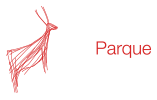Faca na Pedra Olho Solar (Knife in Stone Solar Eye) is centred on studying and paying homage to a heritage that, while belonging to Humanity, also belongs to rural inland Portugal. Based on our fascination with the ancestral outdoor and mobile rock art representations of the Côa Valley, we imagined a space of confluence between humans, animals, stones, plants, watercourses and metals, in an interspecies and transtemporal fiction. Throughout the three years of research and creation of this project, visits to the Côa Valley Museum and Archaeological Park, and conversations with archaeologists, guides and the Park’s geologist, have allowed us to deepen our thinking about a process of resilience, conservation and discovery (archaeological, historical, geographical, cultural, artistic, social…) that is, above all, an important part of our lives. We understand this well, because embracing speculation and despair is part of many of the processes (technical, creative, sensitive, emotional…) of artistic creation.
At times large-scale, these Palaeolithic and Iron Age engravings from the Côa are impressive because they are based on a site-specific vision of great immersion, with few means and a complex and sophisticated simplicity that our own art would like to approach.
The superimposition of engravings to striking effect, the use of topography and the shape of the stones to give volume, depth and shadow to animal drawings are artistic techniques that have been mastered there for 30,000 years. Equally impressive is the drawing of a gigantic auroch, engraved with a flint – which had to travel a long way as it was not naturally available in the region – on a large, high rock that was difficult to access, an engraving visible only from a distance on the other side of the valley, in white paint on schist, with a line that shone powerfully in the sunlight.
Terms such as Stone Age, Iron Age and Ice Age evoke powerful transformations such as the climate crisis we are currently experiencing. It’s the feeling of standing on the top of a mountain and contemplating the fall.
Susana Ventura will sign the exhibition text and the publication will be published by Documenta / Sistema Solar.
This project has been made possible thanks to the support of the Côa Parque Foundation, the Portuguese Direção-Geral das Artes, Campus Paulo Cunha e Silva and Appleton Associação Cultural.
Bio
Daniel Moreira e Rita Castro Neves live and work between Porto and the Beira Alta region. Daniel Moreira holds a BA in Architecture, starting in 2000 a multidisciplinary path between architecture and fine art. Rita Castro Neves, after finishing her photography training at the Lisbon’s Ar.Co School of Visual Arts and the Master in Fine Art at the Slade School of Art in London, has been exhibiting regularly, teaching and curating.
With separate artistic careers, they began working together in 2015, starting a long project based on nature, in which they reflect through drawing, photography, sound, video and performance on artistic collaboration, different artistic techniques and cultures, territory, science, scale and journey. Their work, influenced by animist thinking, often starts from where they are. Attentive to the possibilities of the materials, they find simple solutions, even for complex and large-scale results, which are often indebted to traditional and popular knowledge.
In 2020 the duo finished the renovation project of the Escola de Macieira, a former elementary school of the Portuguese dictatorial Plano dos Centenários, in the Serra de São Macário, in Beira Alta, where they have started a project on mountain culture, nature and the rural, ecology, biopolitics and environmental preservation.
In their studio in Porto, they have been developing the Mail Art project Caixa de Correio, since 2021.


